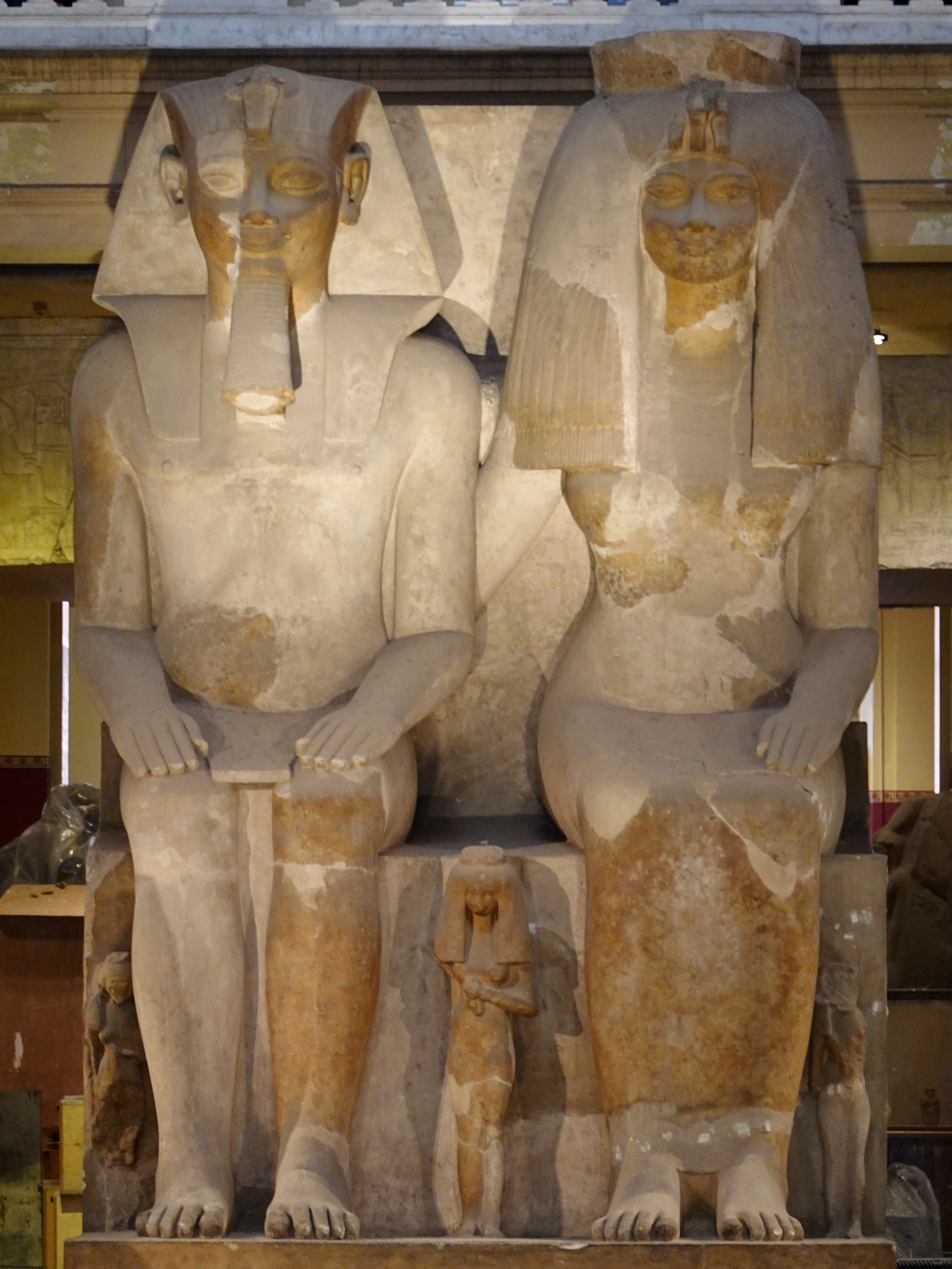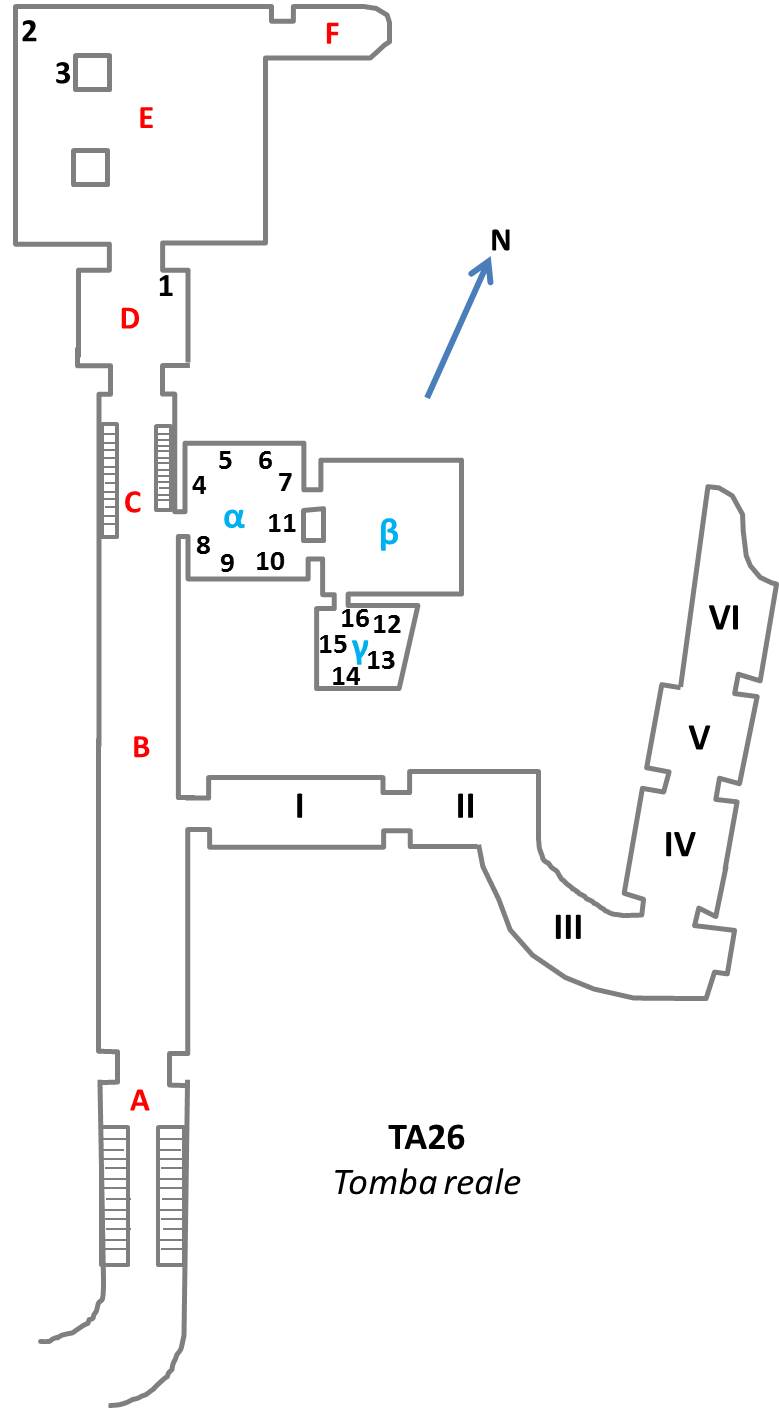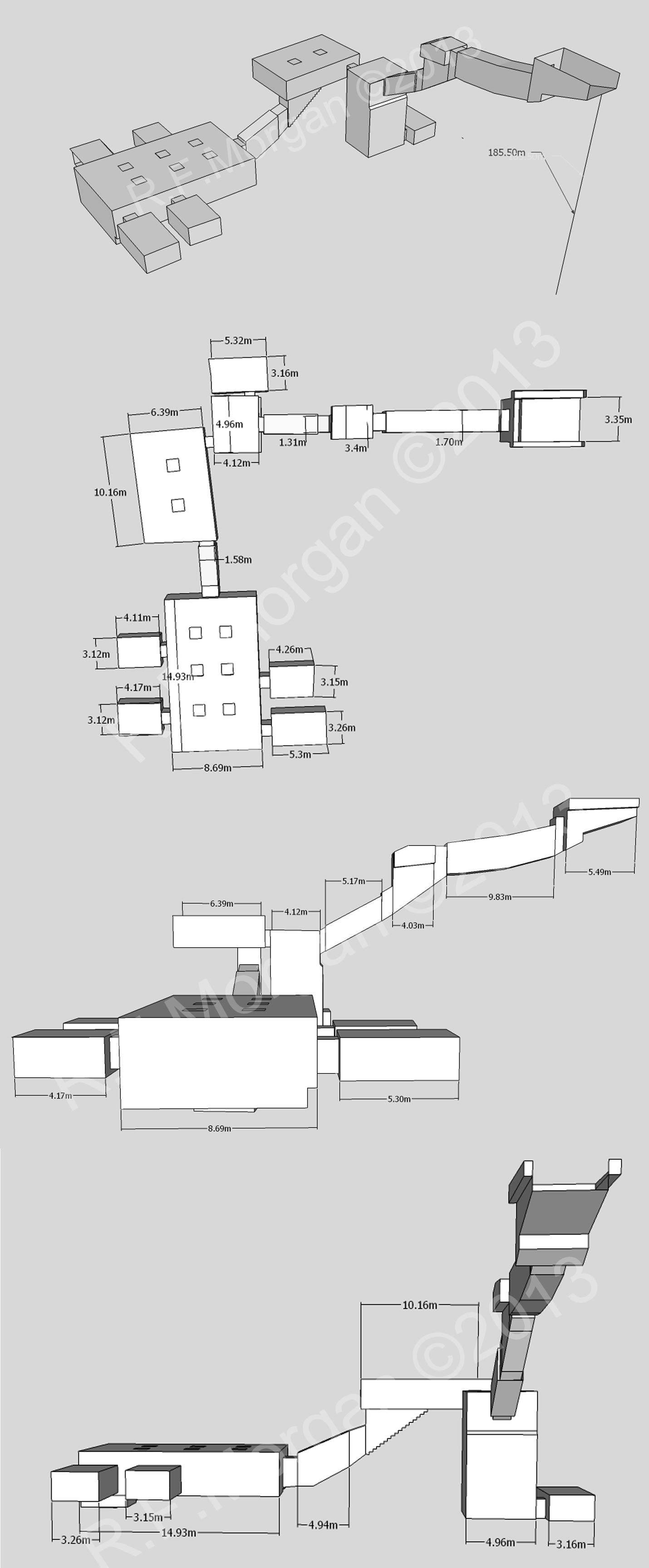|
Tiye
Tiye (c. 1398 BC – 1338 BC, also spelled Tye, Taia, Tiy and Tiyi) was the Great Royal Wife of the Egyptian pharaoh Amenhotep III, mother of pharaoh Akhenaten and grandmother of pharaoh Tutankhamun; her parents were Yuya and Thuya. In 2010, DNA analysis confirmed her as the mummy known as "The Elder Lady" found in the tomb of Amenhotep II (KV35) in 1898. Family and early life Tiye's father, Yuya, was a non-royal, wealthy landowner from the Upper Egyptian town of Akhmim, where he served as a priest and superintendent of oxen or commander of the chariotry. Tiye's mother, Thuya, was involved in many religious cults, as her different titles attested (''Singer of Hathor'', ''Chief of the Entertainers'' of both Amun and Min...), which suggests that she was a member of the royal family. Egyptologists have suggested that Tiye's father, Yuya, was of foreign origin due to the features of his mummy and the many different spellings of his name, which might imply it was a non-Egypt ... [...More Info...] [...Related Items...] OR: [Wikipedia] [Google] [Baidu] |
Amenhotep III
Amenhotep III ( , ; "Amun is satisfied"), also known as Amenhotep the Magnificent or Amenhotep the Great and Hellenization, Hellenized as Amenophis III, was the ninth pharaoh of the Eighteenth Dynasty of Egypt, Eighteenth Dynasty. According to different authors following the "Low Chronology", he ruled New Kingdom of Egypt, Egypt from June 1386 to 1349 BC, or from June 1388 BC to December 1351 BC/1350 BC, after his father Thutmose IV died. Amenhotep was Thutmose's son by a minor wife, Mutemwiya. His reign was a period of unprecedented prosperity and splendour, when Egypt reached the peak of its artistic and international power, and as such he is considered one of ancient Egypt's greatest pharaohs. He is also one of the few pharaohs who was one of the few pharoahs who was List of pharaohs deified during lifetime, worshipped as a deity during his lifetime. When he died in the 38th or 39th year of his reign he was succeeded by his son Amenhotep IV, who later changed his name to Akhe ... [...More Info...] [...Related Items...] OR: [Wikipedia] [Google] [Baidu] |
Beketaten
Beketaten () (14th century BCE) was an ancient Egyptian princess of the 18th Dynasty. Beketaten is considered to be the youngest daughter of Pharaoh Amenhotep III and his Great Royal Wife Great Royal Wife, or alternatively, Chief King's Wife () is the title that was used to refer to the Queen consort, principal wife of the pharaoh of Ancient Egypt, who served many official functions. Description While most ancient Egyptians were ... Tiye, thus the sister of Pharaoh Akhenaten.Aidan Dodson & Dyan Hilton, The Complete Royal Families of Ancient Egypt, Thames & Hudson (2004), p.154 Her name means "Handmaid of Aten". Family Beketaten was most likely the youngest daughter of Amenhotep III and Tiye. This would mean their other children were her siblings, including Prince Thutmose, the Pharaoh Akhenaten, Sitamun, Isis, Henuttaneb, and Nebetah. Some scholars have speculated that Nebetah was identical with Beketaten. However, no evidence proves that they are the same person. ... [...More Info...] [...Related Items...] OR: [Wikipedia] [Google] [Baidu] |
Henuttaneb
Henuttaneb was an Ancient Egyptian princess of the Eighteenth Dynasty of Egypt, Eighteenth Dynasty and daughter of pharaoh Amenhotep III and his Great Royal Wife, Tiye, Queen Tiye. Family Henuttaneb was one of the daughters of ancient Egyptian Pharaoh Amenhotep III of the 18th Dynasty and his Great Royal Wife, Queen Tiye. She was a sister of Pharaoh Akhenaten. She also had several more siblings – one other brother and several sisters. Henuttaneb's name means ''Lady of All Lands'' and was also frequently used as a title for queens. She was the third daughter of her parents (after Sitamun and Iset (daughter of Amenhotep III), Isis, also called Iset). Biography Henuttaneb is shown on a Colossal statue of Amenhotep III and Tiye, colossal statue from Medinet Habu. This huge sculpture shows Amenhotep III and Tiye seated side by side, "with three of their daughters standing in front of the throne--Henuttaneb, the largest and best preserved, in the centre; Nebetah on the right; and ... [...More Info...] [...Related Items...] OR: [Wikipedia] [Google] [Baidu] |
Sitamun
Sitamun, also Sitamen, Satamun; , "daughter of Amun" (c. 1370 BCE–unknown) was an ancient Egyptian princess and queen consort during the 18th Dynasty. Family Sitamun is considered to be the eldest daughter of Pharaoh Amenhotep III and his Great Royal Wife Tiye. She was later married to her father around Year 30 of Amenhotep III's reign. The belief that Sitamun was a daughter of Amenhotep and Tiye is based on the presence of objects found in the tomb of Yuya and Thuya, Queen Tiye's parents, especially a chair bearing her title as the king's daughter. Biography Sitamun is very well attested, most notably in the tomb of Yuya and Thuya where three finely made chairs were discovered. As these chairs were used, and are of progressively larger size, it is assumed they belonged to Sitamun as she was growing up. They were then placed in her grandparents' tomb in the tradition of placing objects which had meaning in the deceased person's life. She is also depicted on the stele of her nurs ... [...More Info...] [...Related Items...] OR: [Wikipedia] [Google] [Baidu] |
Royal Tomb Of Akhenaten
The Royal Tomb of Akhenaten is a multichambered tomb in the Royal Wadi east of Amarna, Egypt, where members of the Amarna Period royal family were originally buried. Akhenaten was an Eighteenth Dynasty pharaoh who reigned for seventeen years (1355-1338 BC) from his capital city of Akhetaten, known today as Amarna. The Royal Tomb was rediscovered in the 1880s; however, the exact year and who discovered it is up for debate. Excavations and research into the tomb began in 1891 and continue to this day. The location of the Royal Tomb, the tomb itself, the artifacts contained within the tomb, and the destruction of parts of the Royal Tomb after Akhenaten's death provide researchers with valuable insights into Akhenaten's reign, including the political environment, and the Amarna Period. Akhenaten's burial chamber can easily be detected in his royal tomb at Amarna since it is the only tomb which was fully finished; the rest of the tomb consists of unfinished rock cut tomb chambers and ... [...More Info...] [...Related Items...] OR: [Wikipedia] [Google] [Baidu] |
Nebetah
Nebetah () was one of the daughters of ancient Egyptian pharaoh Amenhotep III of the 18th Dynasty and his Great Royal Wife Tiye. She was a younger sister of Akhenaten. Biography Nebetah's name means ''Lady of the Palace''. Her name, like that of her elder sister Henuttaneb was also frequently used as a title for queens. She was possibly one of the youngest of the royal couple's children, since she does not appear on monuments on which her elder sisters do. She is shown on a colossal statue from Medinet Habu. This huge sculpture shows Amenhotep III and Tiye seated side by side, "with three of their daughters standing in front of the throne--Henuttaneb, the largest and best preserved, in the centre; Nebetah on the right; and another, whose name is destroyed, on the left." Unlike her sisters Sitamun and Isis, she was never elevated to the rank of queen, and her only known title is ''King's Daughter Whom He Loves'' (the usual title for princesses). This, combined with the fact tha ... [...More Info...] [...Related Items...] OR: [Wikipedia] [Google] [Baidu] |
The Younger Lady
The Younger Lady is the informal name given to an ancient Egyptian mummy discovered within tomb KV35 in the Valley of the Kings by archaeologist Victor Loret in 1898. The mummy also has been given the designation KV35YL ("YL" for "Younger Lady") and 61072, and currently resides in the Egyptian Museum in Cairo. Through DNA tests, this mummy was identified as the mother of the pharaoh Tutankhamun and a daughter of pharaoh Amenhotep III and his Great Royal Wife Tiye. Early speculation that this mummy was the remains of Nefertiti was argued to be incorrect, as nowhere is Nefertiti accorded the title "King's daughter" unless this mummy was in fact a cousin of Akhenaten and not a sister. Discovery The mummy was found adjacent to two other mummies in KV35: a young boy who died at the approximate age of ten and is thought to be Webensenu, and an older woman, who has been identified as Tiye by the recent DNA studies on Tutankhamun's lineage. The three mummies were found together in a sm ... [...More Info...] [...Related Items...] OR: [Wikipedia] [Google] [Baidu] |
Tutankhamun
Tutankhamun or Tutankhamen, (; ), was an Egyptian pharaoh who ruled during the late Eighteenth Dynasty of Egypt, Eighteenth Dynasty of ancient Egypt. Born Tutankhaten, he instituted the restoration of the traditional polytheistic form of ancient Egyptian religion, undoing a previous shift to the religion known as Atenism. Tutankhamun's reign is considered one of the greatest restoration periods in ancient Egyptian history. His endowments and restorations of cults were recorded on what is today known as the Restoration Stela. The cult of the god Amun at Thebes, Egypt, Thebes was restored to prominence, and the royal couple changed their names to "Tutankhamun" and "Ankhesenamun", replacing the -aten suffix. He also moved the royal court from Akhenaten's capital, Amarna, back to Memphis, Egypt, Memphis almost immediately on his accession to the kingship. He reestablished diplomatic relations with the Mitanni and carried out military campaigns in Nubia and the Near East. Tutankh ... [...More Info...] [...Related Items...] OR: [Wikipedia] [Google] [Baidu] |
Great Royal Wife
Great Royal Wife, or alternatively, Chief King's Wife () is the title that was used to refer to the Queen consort, principal wife of the pharaoh of Ancient Egypt, who served many official functions. Description While most ancient Egyptians were monogamy, monogamous, a male pharaoh would have had other, lesser wives and concubines in addition to the Great Royal Wife. This arrangement would allow the pharaoh to enter into diplomatic marriages with the daughters of allies, as was the custom of ancient kings. In the past the order of succession in Ancient Egypt was thought to pass through the royal women. This theory, referred to as the Heiress Theory, has been rejected regarding the Eighteenth Dynasty ever since a 1980s study of its royalty.O'Connor and Cline (Editors), Amenhotep III: Perspectives on his reign, pg 6 The throne likely passed to the eldest living son of those pharaohs. The mother of the heir to the throne was not always the Great Royal Wife, but once a pharaoh was c ... [...More Info...] [...Related Items...] OR: [Wikipedia] [Google] [Baidu] |
Akhenaten
Akhenaten (pronounced ), also spelled Akhenaton or Echnaton ( ''ʾŪḫə-nə-yātəy'', , meaning 'Effective for the Aten'), was an ancient Egyptian pharaoh reigning or 1351–1334 BC, the tenth ruler of the Eighteenth Dynasty of Egypt, Eighteenth Dynasty. Before the fifth year of his reign, he was known as Amenhotep IV (, meaning "Amun is satisfied", Hellenized as ''Amenophis IV''). As a pharaoh, Akhenaten is noted for abandoning traditional ancient Egyptian religion of polytheism and introducing Atenism, or worship centered around Aten. The views of Egyptologists differ as to whether the religious policy was absolutely monotheism, monotheistic, or whether it was monolatristic, religious syncretism, syncretistic, or henotheistic. This culture shift away from traditional religion was reversed after his death. Akhenaten's monuments were dismantled and hidden, his statues were destroyed, and his name Damnatio memoriae, excluded from regnal list, lists of rulers compiled by lat ... [...More Info...] [...Related Items...] OR: [Wikipedia] [Google] [Baidu] |
Eighteenth Dynasty Of Egypt
The Eighteenth Dynasty of Egypt (notated Dynasty XVIII, alternatively 18th Dynasty or Dynasty 18) is classified as the first dynasty of the New Kingdom of Egypt, the era in which ancient Egypt achieved the peak of its power. The Eighteenth Dynasty spanned the period from 1550/1549 to 1292 BC. This dynasty is also known as the Thutmoside Dynasty for the four pharaohs named Thutmose. Several of Egypt's most famous pharaohs were from the Eighteenth Dynasty, including Tutankhamun. Other famous pharaohs of the dynasty include Hatshepsut (c. 1479 BC–1458 BC), the longest-reigning woman pharaoh of an indigenous dynasty, and Akhenaten (c. 1353–1336 BC), the "heretic pharaoh", with his Great Royal Wife, Nefertiti. The Eighteenth Dynasty is unique among Egyptian dynasties in that it had two Queen regnant, queens regnant, women who ruled as sole pharaoh: Hatshepsut and Neferneferuaten, usually identified as Nefertiti. History Early Dynasty XVIII Dynasty XVIII was founded by Ahmo ... [...More Info...] [...Related Items...] OR: [Wikipedia] [Google] [Baidu] |
KV35
Tomb KV35 is the burial place of Amenhotep II, a pharaoh of the Eighteenth Dynasty of Egypt, in the Valley of the Kings in Luxor, Egypt. Later, it was used as a cache for other royal mummies. It was discovered by Victor Loret in March 1898. Layout and history It has a bent axis, typical of the layout of early Eighteenth Dynasty tombs, but several features make this tomb unusual. The burial chamber is rectangular and divided into upper and lower pillared sections, with the lower part holding the cartouche-shaped royal sarcophagus of the king. This style of burial chamber became standard for royal burials in the later New Kingdom. Only the burial chamber of the tomb is decorated, albeit in an unusual style that, other than '' KV34'' (the tomb of Amenhotep II's father, Thutmose III), is not found elsewhere in the Valley of the Kings. On a yellow-tinged background (intended to resemble aged papyrus), the '' Amduat'' is traced, depicting the ancient Egyptian deities as simple ... [...More Info...] [...Related Items...] OR: [Wikipedia] [Google] [Baidu] |









